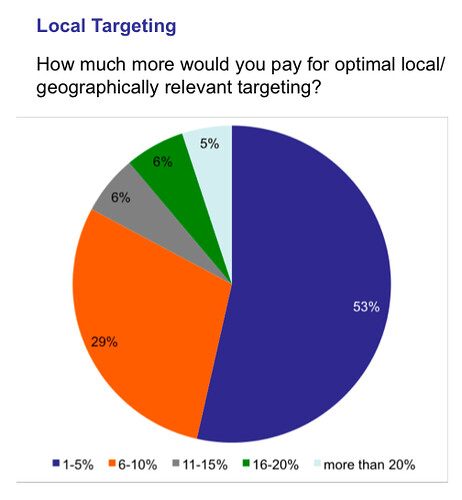Marchex Launches Platform And Tools That Seek To Better Connect Online Search And Offline Buying
One of the reasons that “local search” has struggled in some quarters has been the challenge of tracking the internet’s influence on in-store or local transactions. This is a theme I heard raised by large retailers at a ShopLocal partner event a couple of weeks ago and one that came up several times in various […]
One of the reasons that “local search” has struggled in some quarters has been the challenge of tracking the internet’s influence on in-store or local transactions. This is a theme I heard raised by large retailers at a ShopLocal partner event a couple of weeks ago and one that came up several times in various contexts at SMX Local-Mobile.
Marchex is seeking to address that challenge with the integration of the company’s various advertiser-facing assets and technologies in a single toolset that offers enhanced tracking capabilities. The company is calling this a next-generation local advertising platform.
Using the company’s VoiceStar call platform and tracking, smart landing pages, as well as forms, map clicks and other methodologies, Marchex is seeking to provide much more information to advertisers (large or small) around intent to buy offline.
The inability of larger advertisers to clearly evaluate the ROI of local or geotargeted campaigns with offline sales has been a stumbling block for the entire local marketplace, despite the fact that a broad range of studies over the past couple years have repeatedly confirmed that consumers shop/research online and buy offline:
–Nielsen: 80% of consumer electronics buyers bought from a store whose Web site they visited first (5/08)
–comScore: 92% of Internet/search influenced consumer electronics purchases happen in local stores
–TMP Directional Media/comScore: 82% of the people using local search sites followed up with offline action (in-store visit, phone call)
According to SEMPO’s recent “State of Search Marketing” survey, about 36% of agencies (respondents included agencies and advertisers) were enthusiastic about the current state of geotargeted search marketing. The rest had mixed reviews. The percentages were largely unchanged from the previous year.
Yet geotargeting tools and capabilities are still fairly rudimentary in terms of their accuracy, although getting better. Also according to the SEMPO survey, marketers would pay a premium for improved (“optimal”) geotargeting capabilities:
SEMPO also found that marketers would pay an even larger premium for demographic targeting. But what few recognize is that local and demographic targeting merge when location awareness gets down to the neighborhood and zip level.
The Marchex tools, however, aren’t about improved location awareness, they’re about capturing more consumer behavior — intent to buy offline — and making it more visible to marketers to get a better sense of the true ROI Of their campaigns.
Opinions expressed in this article are those of the guest author and not necessarily Search Engine Land. Staff authors are listed here.
Related stories
